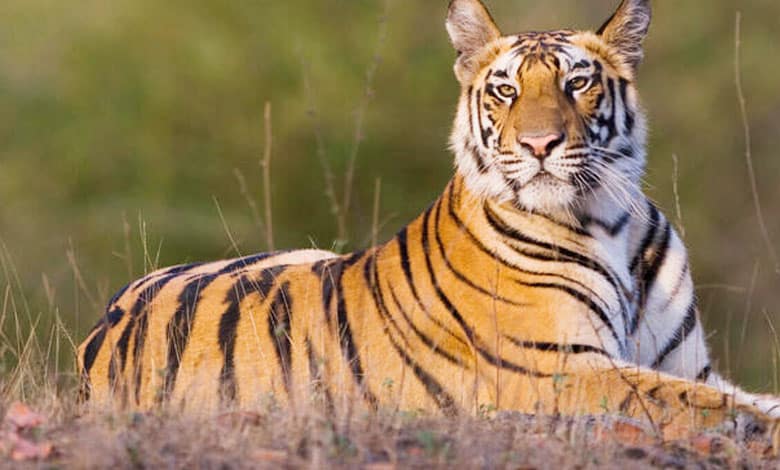Tiger Cub Goes Missing in MP’s Panna Tiger Reserve: Authorities Call It a ‘Natural Process’
"A tiger cub from Panna Tiger Reserve has gone missing, raising concerns among wildlife enthusiasts. Authorities say it may be a natural process. Read more about the search efforts and conservation impact."

Bhopal: The mysterious disappearance of a tiger cub from Madhya Pradesh’s Panna Tiger Reserve (PTR) has once again drawn attention to the region, raising concerns among wildlife enthusiasts and conservationists.
The missing cub belonged to tigress P-141, who recently gave birth to her fourth litter. The cub, aged between seven and eight months, was last seen about two weeks ago in the reserve’s tourist zone.
Table of Contents
Missing Tiger Cub in Panna Reserve: What We Know So Far
According to officials, the cub’s absence was first noticed when visitors and forest personnel observed that only three cubs were accompanying P-141 instead of the usual four. The playful antics of the cubs had delighted tourists, but concern grew when one was no longer sighted.
Speaking to IANS, PTR Field Director Anjana Suchita Tirkey explained that the cub is “not necessarily missing, as presumed.” She elaborated that in the wild, tigresses may abandon or even kill weaker offspring as part of nature’s survival mechanism.
Why Would a Tigress Abandon or Kill Her Cub?
Wildlife experts suggest that maternal abandonment is not uncommon in big cats. Several reasons could explain the cub’s disappearance:
- Natural Selection: Tigresses often focus on raising the strongest cubs, sometimes leaving weaker ones behind.
- Injury or Sickness: If a cub is weak or unwell, the mother may instinctively abandon it.
- Predation or Attack: Other predators or male tigers might pose a threat to the cub.
- Territorial Displacement: The cub may have strayed too far from the mother’s protection.
Tirkey stated, “A tigress usually rears her cubs until they are two years old in the wild. However, if a cub is separated or weak, survival becomes difficult.”
Search Operations Underway
Despite the belief that the disappearance may be natural, the forest department has intensified search efforts. Teams of trained forest officials, along with four elephants, are scouring the reserve, tracking pugmarks and scanning the dense grasslands.
Panna’s Conservation Success Story and Challenges
Panna Tiger Reserve has experienced a dramatic turnaround in tiger conservation. In 2009, the reserve lost its entire tiger population due to poaching and habitat destruction. However, through an intensive reintroduction program, it has witnessed a resurgence, now hosting 63 adult tigers, including 30 females.
The thriving population has been a source of pride for Madhya Pradesh’s forest department. Videos of cubs playing in the wild have regularly gone viral, showcasing the success of conservation efforts. However, the sudden loss of a cub has reignited debates about the challenges of managing a growing tiger population in a dynamic natural habitat.
What Happens if the Cub is Found Alive?
If the missing cub is located and determined to be alive but unable to survive in the wild, officials have stated that it may need to be raised in captivity. This would involve providing it with special care, food, and protection, as a cub separated from its mother would struggle to survive on its own.
The Bigger Picture: Human-Wildlife Conflict and Poaching Concerns
While this incident is currently being considered a natural phenomenon, it raises broader concerns about human-wildlife conflict and potential poaching threats. Though there is no evidence to suggest poaching in this case, the loss of any tiger—whether natural or otherwise—remains a significant concern for conservationists.
Looking Ahead: The Future of Panna’s Tigers
As the search for the missing cub continues, Panna Tiger Reserve remains a critical example of successful conservation in India. The reserve’s growing tiger population is a testament to effective wildlife management, but challenges remain, including habitat preservation and reducing human interference.
The incident has sparked fresh discussions on how to protect young cubs in reserves while allowing nature to take its course. With ongoing efforts by forest officials, the fate of the missing cub will soon become clear.
For more updates on wildlife conservation and Panna Tiger Reserve, stay tuned to our latest reports.
